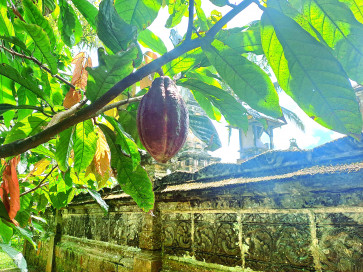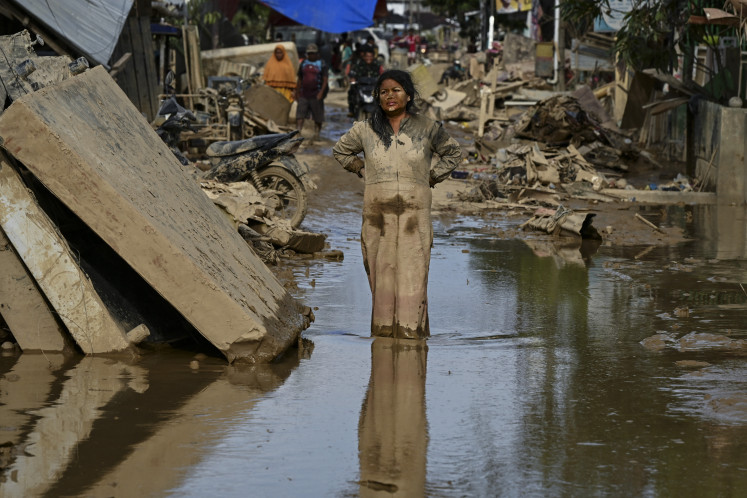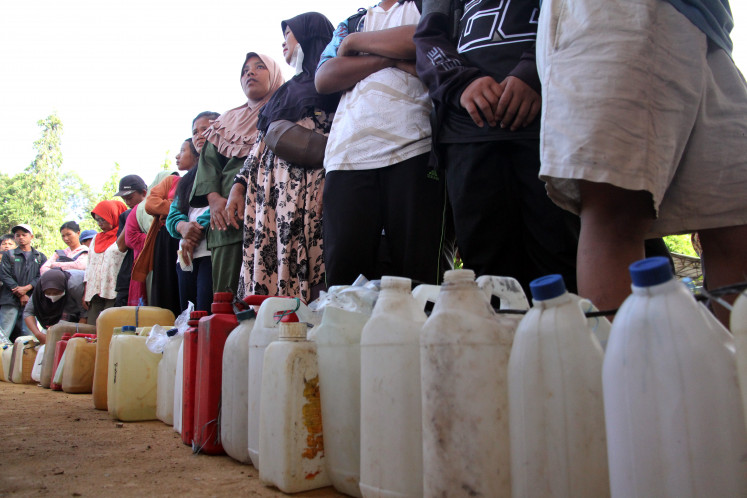Popular Reads
Top Results
Can't find what you're looking for?
View all search resultsPopular Reads
Top Results
Can't find what you're looking for?
View all search resultsRI, Singapore sign maritime boundary agreement
Mapping it out: Indonesian Foreign Minister Hassan Wirajuda (right) and his Singaporean counterpart George Yong-Boon Yeo brief the press Tuesday in Jakarta, following the signing of a treaty on the two countries’ maritime boundary
Change text size
Gift Premium Articles
to Anyone
Mapping it out: Indonesian Foreign Minister Hassan Wirajuda (right) and his Singaporean counterpart George Yong-Boon Yeo brief the press Tuesday in Jakarta, following the signing of a treaty on the two countries’ maritime boundary. JP/R. Berto Wedhatama
After four years of negotiations, Indonesia and Singapore finally signed a maritime boundary agreement Tuesday, in a deal that saw Singapore renounce its reclaimed shoreline as the basis for determining the border.
The agreement on the western boundary was signed in Jakarta by Indonesian Foreign Minister Hassan Wirajuda and his Singaporean counterpart George Yeo. Under the deal, Indonesia will draw its shoreline from Nipah Island, part of the Riau Islands province off Sumatra, and Singapore from the original coastline of its Sultan Shoal Island.
“The signing is a very welcome development as it will strengthen bilateral relations between Indonesia and Singapore,” Hassan said.
“Border diplomacy is one of the priority areas of Indonesian diplomacy, as we share borders with 10 countries in the regions. We prioritize border negotiations because we strongly believe that good border relations makes for good neighbors.”
Singapore has reclaimed Jurong Island, Tuas View and Changi, mostly with sand imported from Indonesia, before Jakarta banned the export of seabed sand in 2003 and terrestrial sand in 2006.
In 2003, Nipah Island was at the center of controversy after environmentalists claimed an estimated 300 million cubic meters of sand had been dredged from the seabed around it and sold to Singapore each year for its coastal expansion works that boomed from 1999.
The dredging risked Nipah Island, Indonesia’s outermost territory, sinking below sea level during high tides, in a disappearance that would have threatened Indonesia’s maritime boundary. The government has since revitalized the tiny island and developed it for various purposes, including as a traffic monitoring base for anchoring vessels.
Hassan said Indonesia and Singapore were parties to the United Nations Convention on the Law of the Sea (UNCLOS), with the newly signed agreement reflecting both countries’ adherence to the principles contained in the convention.
Indonesia and Singapore will next take up negotiations over their eastern boundary.
Arief Havas Oegroseno, the Foreign Ministry’s director general for international treaties and legal affairs, said recently Jakarta would propose drawing an eastern boundary line from Batam Island that would divide it from Singapore’s Changi.
Besides the Batam-Changi segment, Indonesia and Singapore will also have to negotiate for a segment between Bintan in Indonesia’s Riau Islands and Singapore’s Pedra Branca Islet and the waters around it.
The negotiations for the Batam-Changi segment can proceed immediately, while the Bintan-Pedra Branca segment can only be conducted once Singapore settles the ownership of South Ledge, an islet south of Pedra Branca claimed by both Singapore and Malaysia.










